What is the problem & the opportunity?
Well established workflows exist from production through packaging, presentation to final content distribution. Each discipline in the chain has come to rely upon tried, tested, and above all, unified standards. Standards that are well understood, work together and that allow for free interchange of content at each juncture without technical issue and the fear of unknowns.
Report ITU-R BT.2408 highlights the need for the Unified Reference White Level which is suitable for both HDR systems (HLG & PQ) and provides examples of such values. Moreover, it stipulates that due to the distinctively large headrooms in HDR systems there should only be single Reference White Level.
The advent of HDR and Wide Color Gamut technologies demands changes to customs and practices. New workflow rules must also be established and honed. The problem is that in this early adoption phase, competing standards are anything but unified.
This presents the industry with an opportunity to establish an agreed upon commonality between the current incompatible array of standards and self interest.
The solution to this issue is harmonious, technically correct and agile content production and distribution, proposed here in the form of a Target Display Agnostic HDR Workflow, plus Video and Audio Levels Mapping, adaptive to viewing/listening conditions, and in addition a Unified HDR Reference White approach.
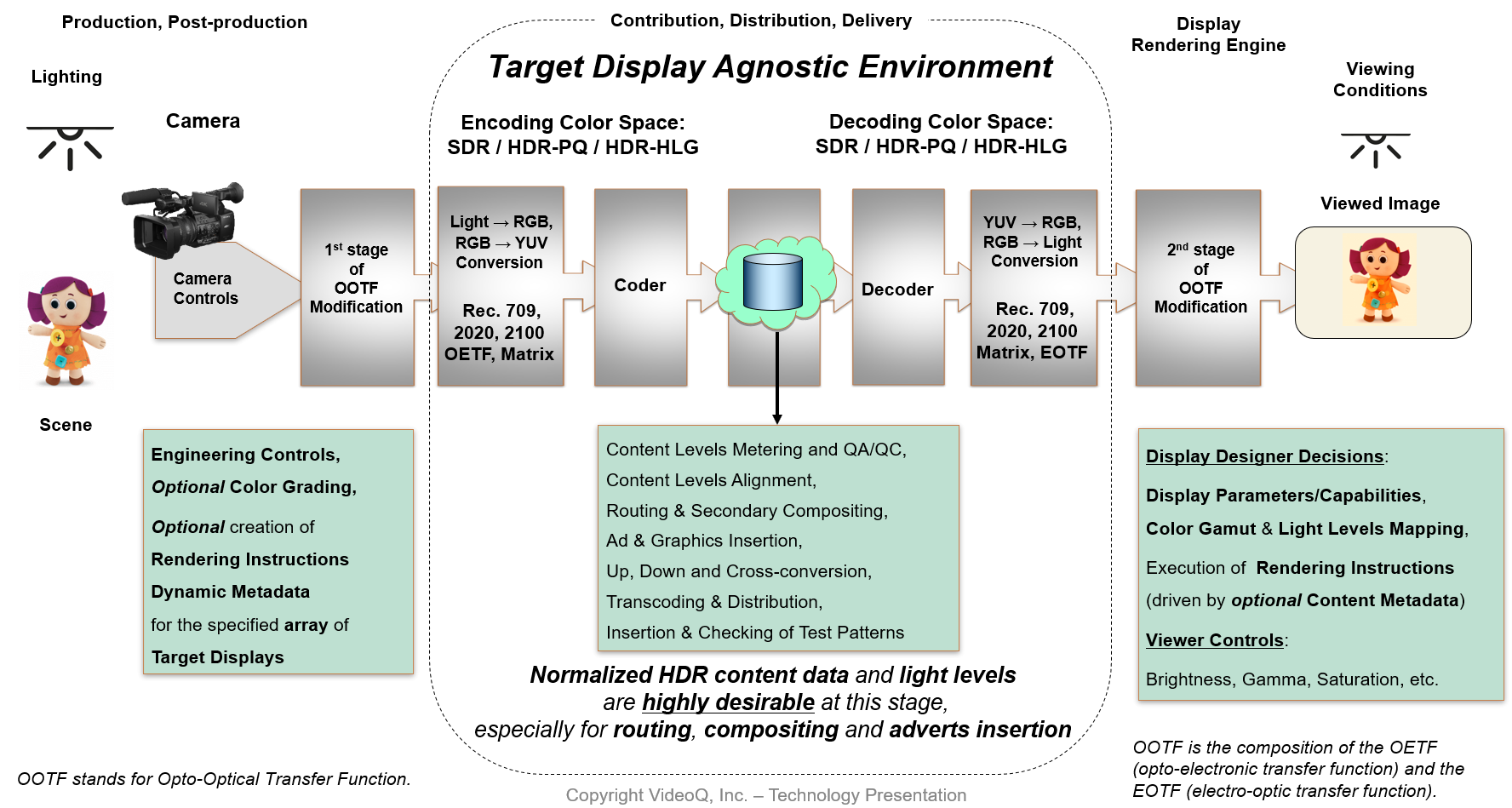
The dotted rounded rectangle in the central part of the diagram designates the “Target Device Agnostic Environment” within the HDR/SDR content workflow.
It involves a large group of important processes and procedures:
Reference White QA/QC Point, Content Levels Metering, Content Levels Alignment, Routing & Secondary Compositing,
Ads & Graphics Insertion, Up-, Down- and Cross-conversion,
Transcoding & Distribution, Insertion & Checking of Test Patterns.
All such processes require normalized video data, ideally in the same format with the same white level, though mutually convertible formats with different, but known, white levels are also acceptable.
HDR & SDR, PQ & HLG
Long Live Mutually Beneficial Peaceful Coexistence!
A bit of history, SDR Reference Black and White Levels
The Reference White (Nominal White) concept and the term itself was originally related to the monochrome TV analog signal value of 100%.
The 100% level was set to 700mV (100IRE in the USA).
Analog color TV camera control engineers and camera operators needed tools to produce the best video images. Waveform monitors with R, G and B components parade where used in a way to see that at least one of the R, G and B color components should exhibit max possible signal swing, but none of them should go much above 100%.
Thus, video engineers used an implicit version of the max(R, G, B) aka MaxRGB envelop for QA / QC purposes long before the arrival of modern digital SDR / HDR systems.
The famous ITU-R BT.601 Recommendation and numerous following national and international standards applied this simple and very important concept to the digital components: Y, R, G and B.
To handle possible alignment errors and signal overshoots, the BT.601 standard allocated extra levels below 0% Reference Black (8 bit 1-15) and above 100% Reference White (8 bit 236-254).
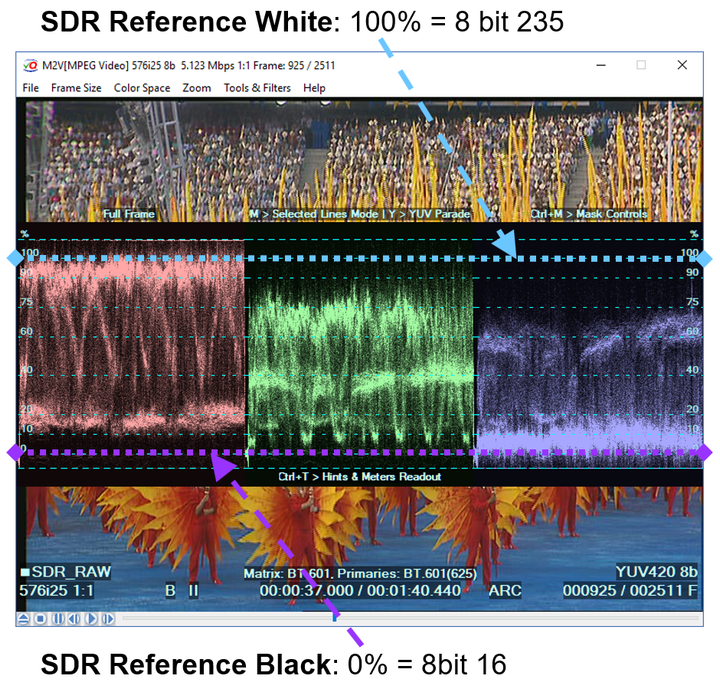
Dynamic Range Conversion – Necessity & Options
Mixed HDR/SDR environments require software and hardware engines for verification, optional manual and/or automated enhancement, up-, down-, and cross- conversion within and/or between all HDR/SDR formats and color spaces.
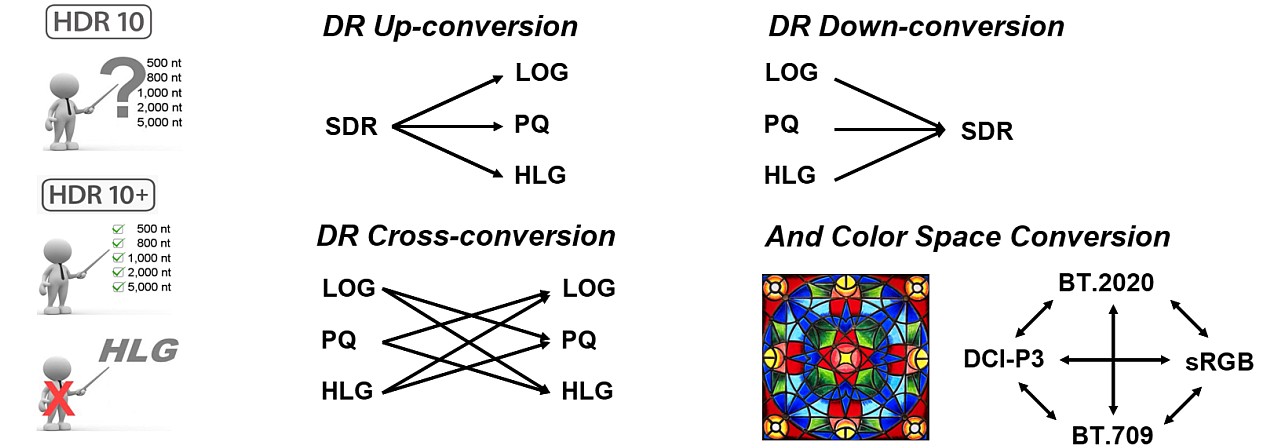
Proposed Solution Key Values
| Parameter | Unit | PQ | HLG |
|---|---|---|---|
| Relative Data Level | % | 58 | 75 |
| 10 bit Narrow Range Data | integer | 572 | 721 |
| Relative Light Level | % | 2.0 | 20 |
| Light Level | nit, % | 200nit | 20% |
Benefits and advantages of the proposed solution
- Very important: The same 75% and 58% URW values are also specified in ITU-R BT.2111 standard for HDR Color Bars Test Patterns
- For the widely used 1000nit HLG display 75% signal level means 200nit (same as PQ Reference White)
- A 200nit level is close to the middle point of the typical White Levels range currently used in PQ production; this range is about 145nit . . . 250nit
- A 200nit level is safely below 300nit, often quoted as a typical White Level of SDR content displayed by consumer grade HDR displays, and effective peak level of typical computer monitors and smartphones
- The proposed HLG & PQ Reference White does not rely on any particular display type or display gamma
The 1000nit value is used here only for HLG level scaling purposes, NOT as a target HLG device specification.
Dynamic Range Conversion – Necessity & Options
Mixed HDR/SDR environments require software and hardware engines for verification, optional manual and/or automated enhancement, up-, down-, and cross- conversion within and/or between all HDR/SDR formats and color spaces.
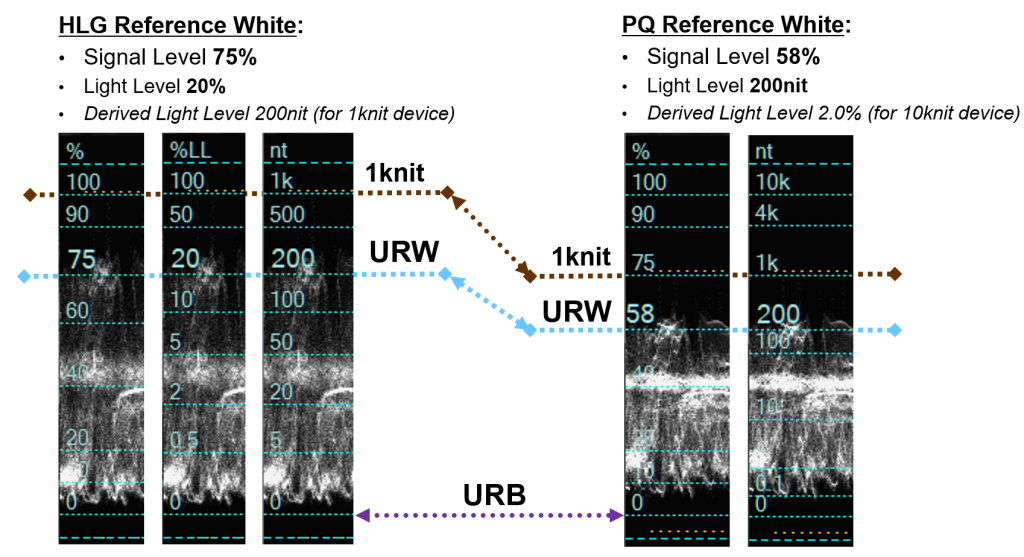
This practical example shows why Unified Reference White (URW) approach is especially useful for live sport events coverage, when HLG and PQ versions are created simultaneously in real time.
More details about the Unified HDR Reference White, the QA/QC tools and the test patterns relying on these levels can be found in:
VideoQ HDR Reference White Proposal (PDF)
VideoQ HDR Reference White Proposal (PPS in RAR archive)
VideoQ HDR Tools & Technologies page (HTML)
VideoQ HDR Test Patterns Presentation (PDF)
Thank you, Supporters & Contributors:
- Roderick Snell, co-founder of Snell & Wilcox and winner of several Technical Emmys and Queen’s Awards
- Florian Friedrich, CEO and CTO of FF Pictures GmbH
- Josef Marc, a member of SMPTE’s HDR committee
- Maxim Levkov, industry expert, system architect.
- David Tasker, global industry expert, engineer, trainer & technical awards winner
- Peter Wilson, founder of High Definition & Digital Cinema Ltd, technical awards winner
For the HDR and WCG analysis tools and levels alignment procedures see posts in the VideoQ Analyzers and VideoQ Test Patterns categories.

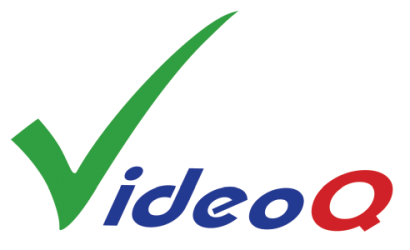
I think the document would benefit by picking normalized values for HLG (using an overall-system gamma of 1.2). This follows the practices established for conversion between HLG and PQ. The WFM signal percentage for HLG would then become 79.33%(265.51NITS) @ limited range.
If this is the case, it leaves 20% signal level remaining for highlights (in HLG). With the reduced code values in the remaining 20% signal level, additional tests would have to be made to determine if there are any adverse effects in the highlight range and also what happens with conversion back to SDR.